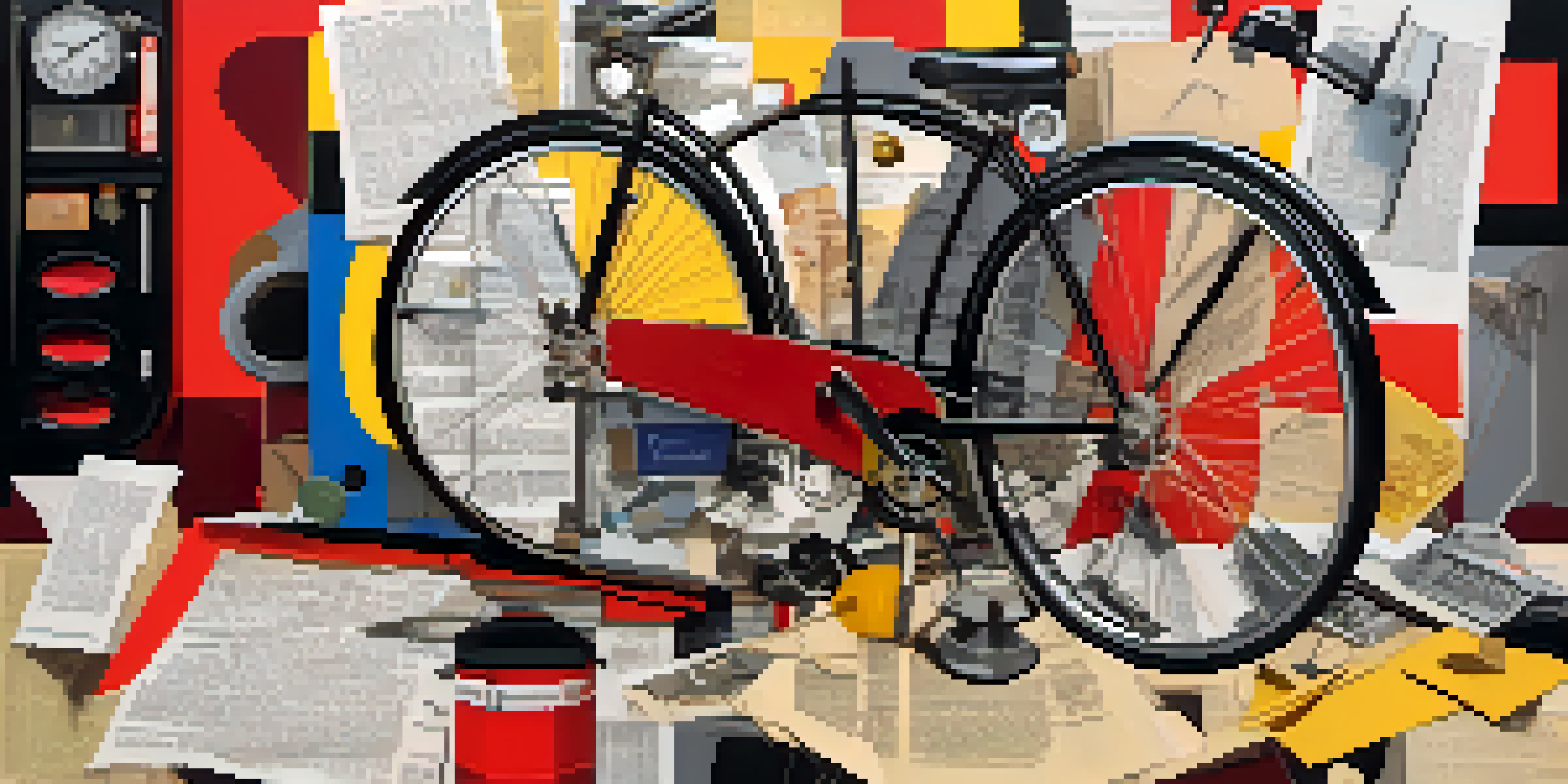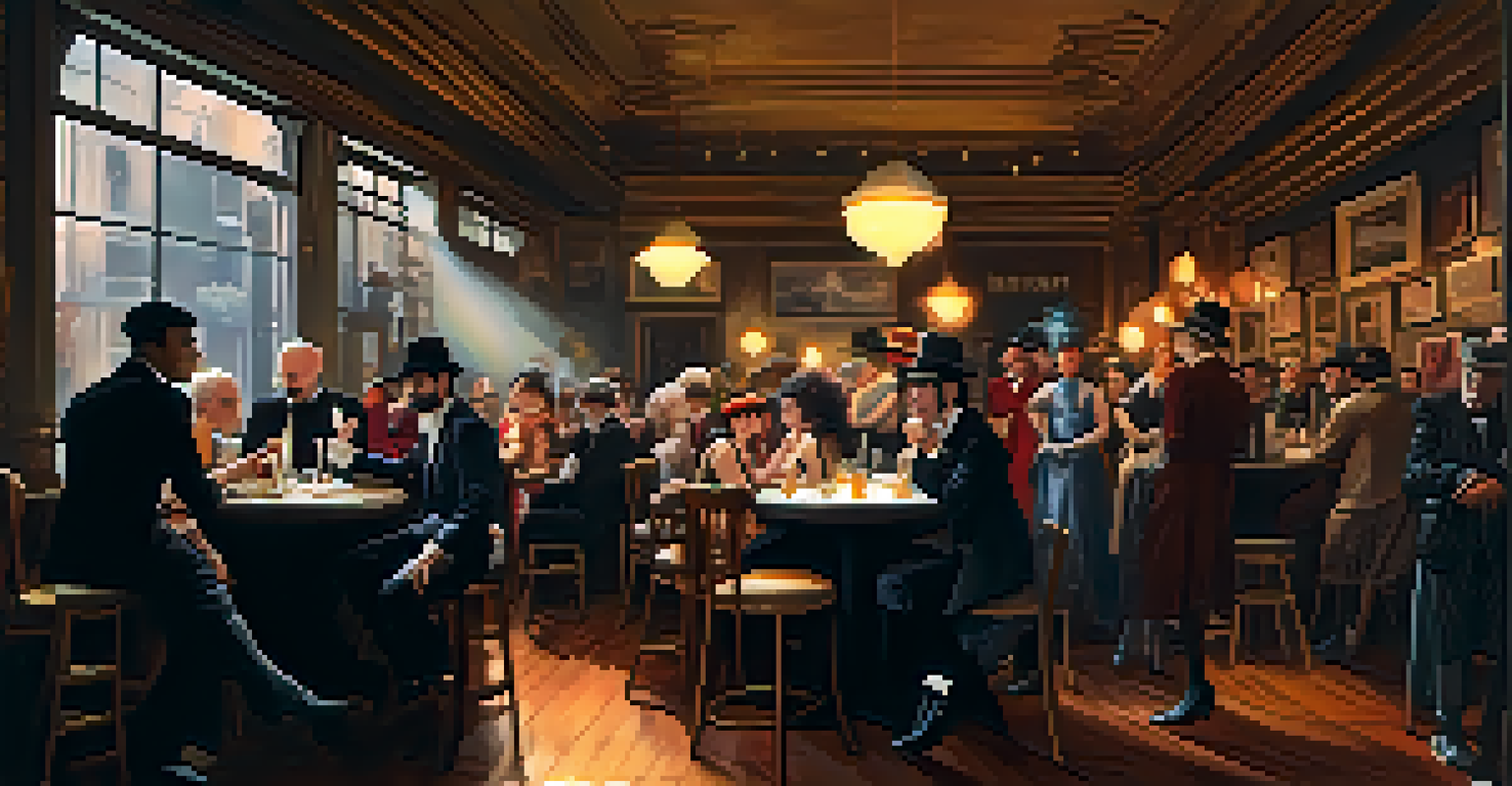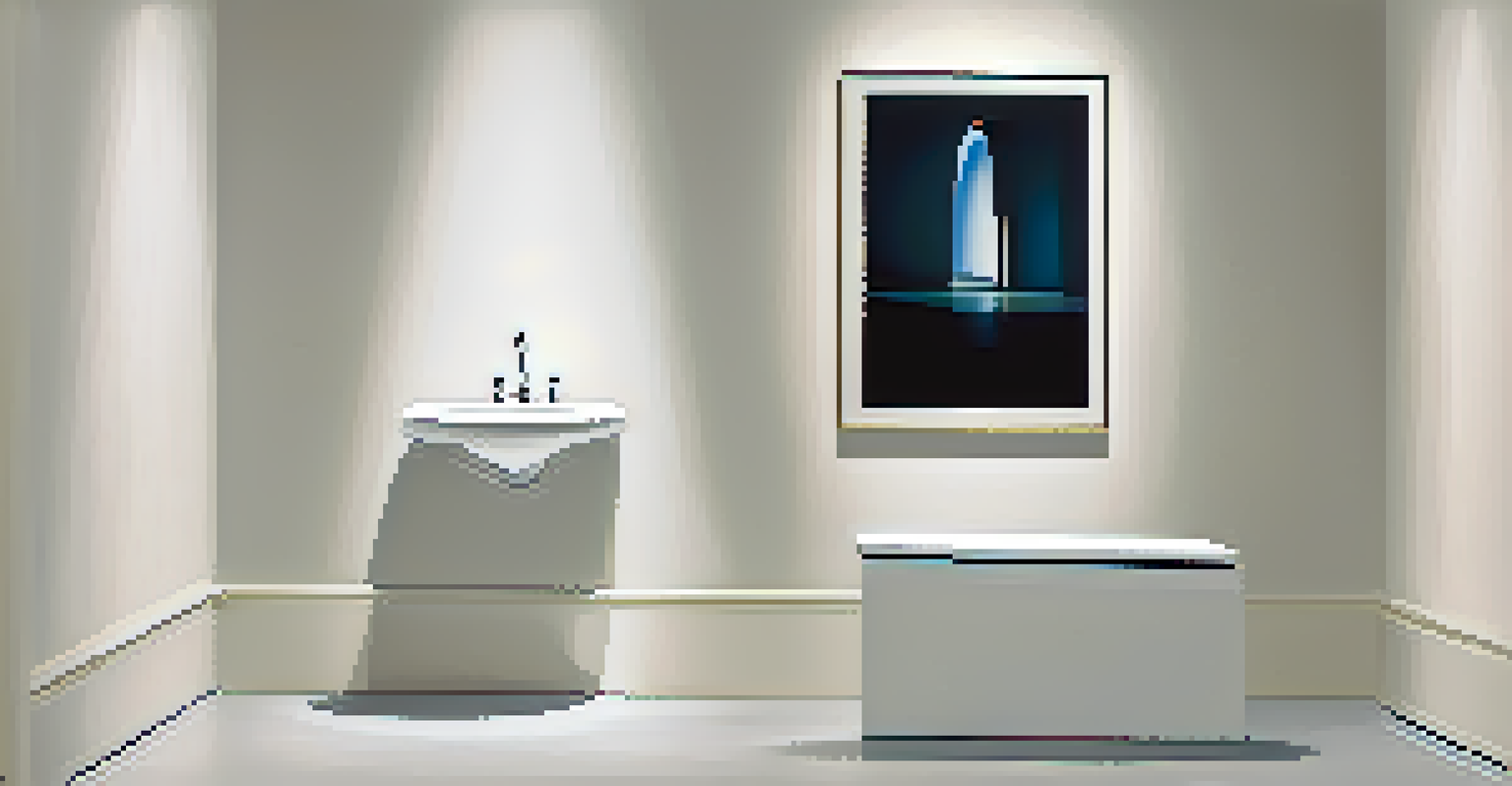Dadaism Explained: Art Against Logic and Conventionalism

Understanding Dadaism: An Overview of the Movement
Dadaism emerged in the early 20th century, primarily as a response to the horrors of World War I. This art movement sought to challenge the conventions of art, logic, and societal norms. It was less about creating beautiful art and more about provoking thought and questioning reality.
Dada is the beginning of everything, and I am proud to have been one of its fathers.
The term 'Dada' itself is intentionally nonsensical, reflecting the movement's disdain for reason and order. Artists, poets, and performers associated with Dadaism aimed to dismantle traditional aesthetics and instead embraced chaos and absurdity. This rebellion was a way to confront the disillusionment of their time.
In essence, Dadaism can be seen as a radical critique of the cultural values that led to war. It paved the way for subsequent movements like Surrealism and influenced contemporary art by encouraging artists to push boundaries and explore new forms of expression.
Dadaism's Roots: Historical Context and Influences
To fully grasp Dadaism, it's essential to understand the historical context in which it arose. The movement began in Zurich, Switzerland, during the chaos of World War I, where artists sought refuge from the conflict. They gathered in cafes, sharing ideas and expressing their frustrations through unconventional art forms.

One key influence was the Futurist movement, which celebrated technology and modernity, but Dadaists took a starkly different stance. They rejected the glorification of war and progress, believing that art should reflect the absurdities of human existence. This anti-war sentiment was a driving force behind their creative endeavors.
Dadaism Challenges Artistic Norms
Emerging as a response to World War I, Dadaism rejected traditional art forms and embraced chaos, provoking thought about the nature of creativity.
The Dada movement quickly spread to cities like Berlin, New York, and Paris, each location contributing its unique flavor. In this melting pot of ideas, Dadaism thrived as artists experimented with collage, performance, and ready-made objects, pushing the boundaries of what art could be.
Key Figures in Dadaism: Artists and Their Contributions
Dadaism boasted a diverse cast of influential figures, each bringing their unique vision to the movement. One of the most prominent was Marcel Duchamp, known for his provocative ready-made artworks, such as 'Fountain,' which was simply a urinal turned upside down. Duchamp challenged the very definition of art, asking viewers to reconsider the role of the artist.
Dada was a form of protest, not just against art, but against the very nature of reality.
Another significant figure was Hugo Ball, a poet and co-founder of the Cabaret Voltaire, the birthplace of Dada. His performances often included nonsense poetry and bizarre costumes, aimed at shocking the audience and breaking down conventional expectations. Ball's work emphasized the importance of spontaneity and playfulness in art.
Tristan Tzara, a Romanian poet, was also central to the movement, known for his manifestos that called for the rejection of logic and coherence. Together, these artists and many others shaped Dadaism into a platform for creative rebellion and experimentation, leaving a lasting impact on the art world.
Dadaism's Techniques: Embracing Absurdity and Nonsense
Dada artists employed a variety of innovative techniques, often characterized by their embrace of absurdity and randomness. Collage, for instance, became a popular method, allowing artists to cut and paste different materials and images to create unexpected juxtapositions. This technique challenged traditional notions of composition and artistic intention.
Performance art also played a vital role in Dadaism, with artists staging events that blurred the lines between art and everyday life. These performances were often chaotic and spontaneous, designed to provoke reactions from the audience. The unpredictability of these events mirrored the uncertainty of the times.
Key Figures Shaped Dadaism's Impact
Influential artists like Marcel Duchamp and Hugo Ball pushed the boundaries of art through innovative techniques and performances, leaving a lasting legacy.
Additionally, Dadaists utilized found objects, or 'ready-mades,' to make statements about art's role in society. By taking everyday items and presenting them as art, they challenged viewers to reconsider their preconceptions about creativity and value. This approach laid the groundwork for future movements and continues to influence contemporary art.
The Legacy of Dadaism: Influence on Modern Art Movements
Dadaism's impact extends far beyond its own time, influencing numerous modern art movements that followed. Surrealism, for instance, drew heavily from Dada's exploration of the unconscious and the absurd. Artists like Salvador Dalí and René Magritte embraced the idea of dreamlike imagery, pushing the boundaries of reality in their work.
Moreover, the Fluxus movement of the 1960s continued Dada's legacy by blurring the lines between art and life, emphasizing the importance of audience participation. This idea of art as an experience rather than a product resonates with many contemporary artists today.
Additionally, Dadaism's spirit of rebellion against societal norms can be seen in various forms of street art and installation art, where artists challenge conventions and provoke thought. By encouraging artists to think outside the box, Dadaism has left an indelible mark on the evolution of art.
Dadaism in Popular Culture: Reflections in Today’s World
The influence of Dadaism can be felt in various aspects of popular culture, from literature to music and film. Many contemporary authors and filmmakers embrace absurdity in their storytelling, echoing the Dadaist rejection of rational plots. This can be seen in works like 'The Hitchhiker's Guide to the Galaxy' by Douglas Adams, which thrives on whimsy and randomness.
In music, genres such as punk and experimental sound often reflect Dada's ethos of chaos and rebellion. Artists like Frank Zappa and John Cage have drawn inspiration from the movement, incorporating unconventional sounds and structures into their compositions. This highlights how Dadaism continues to challenge artistic boundaries.
Dadaism's Legacy in Modern Art
Dadaism's spirit continues to influence contemporary art movements, encouraging experimentation and challenging societal norms across various forms of creative expression.
Moreover, the use of mixed media and installation art in galleries today is a direct nod to Dada's innovative spirit. Many modern artists utilize everyday objects and multimedia elements in their work, inviting viewers to engage with art in new and unexpected ways. Dadaism's legacy lives on in these contemporary expressions of creativity.
Criticism of Dadaism: Understanding the Counterarguments
While Dadaism is celebrated for its radical approach, it has also faced criticism over the years. Some detractors argue that the movement's anti-art stance undermines the value of traditional artistic skills and craftsmanship. They believe that by rejecting technique in favor of chaos, Dada artists risk diluting the meaning and significance of art.
Additionally, critics have pointed out that Dadaism’s emphasis on absurdity can lead to a sense of nihilism, where nothing is deemed valuable or meaningful. This perspective raises questions about the purpose of art and whether it should convey messages or evoke emotions. Some argue that this lack of direction can leave audiences feeling disconnected.

Despite these criticisms, Dadaism remains a vital part of art history and continues to provoke discussions about the nature of creativity. The debates surrounding its legitimacy and impact reflect the broader conversations about art's role in society, ensuring that Dadaism will remain relevant in the discourse of art for years to come.